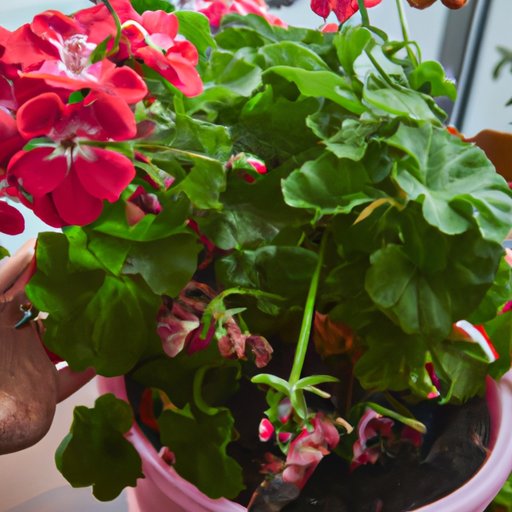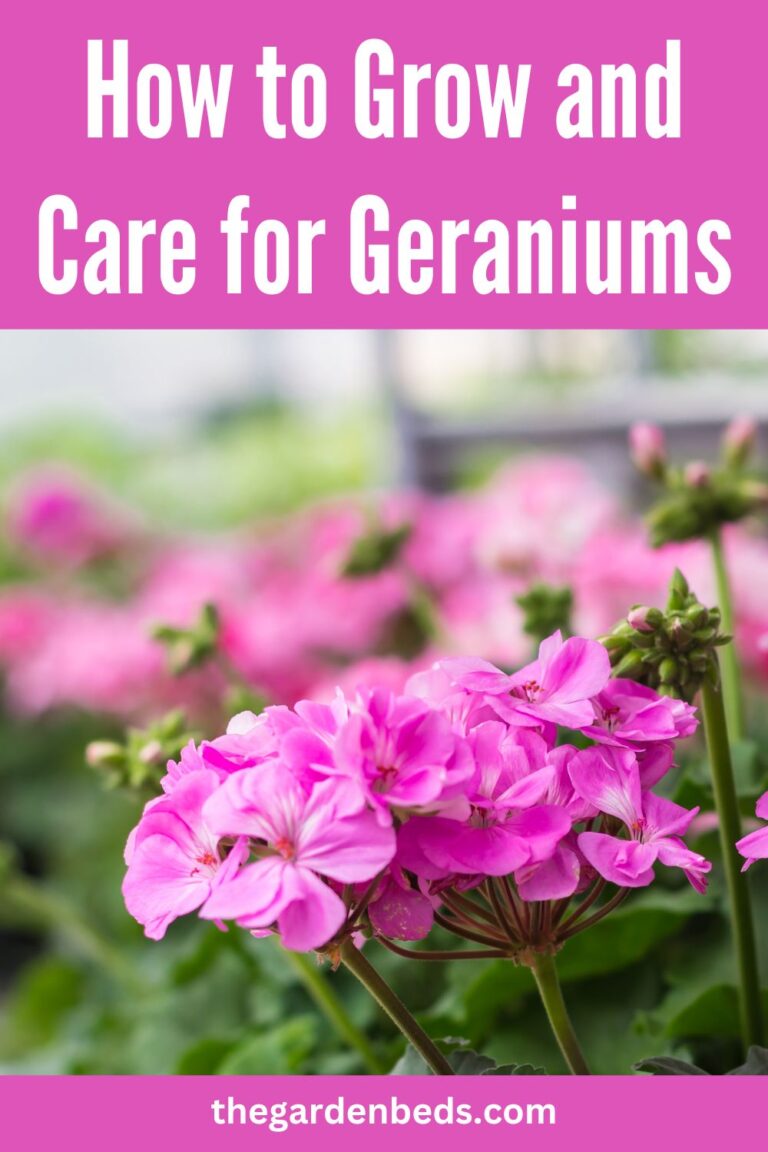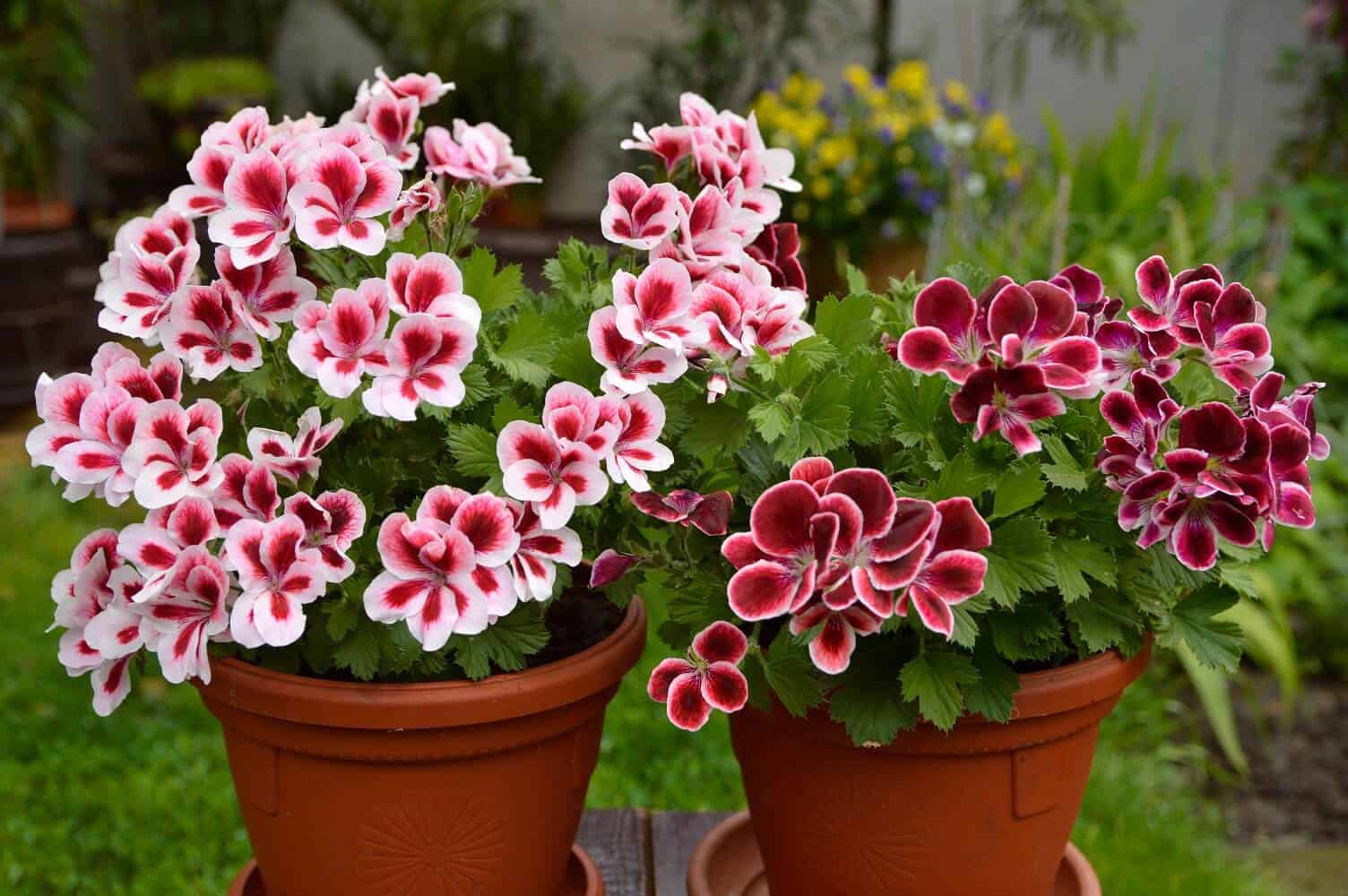Unlocking the Secrets to Thriving Geraniums
Geraniums are one of the most popular and versatile flowering plants, cherished for their beauty and benefits in gardens and indoor spaces. With over 400 species, these plants offer a wide range of colors, shapes, and sizes to suit various tastes and environments. However, to unlock their full potential and enjoy their vibrant blooms, it’s essential to understand the basics of geranium care. Learning how to care for geraniums is crucial to provide them with the right conditions to thrive. By mastering the art of geranium care, you can enjoy these stunning plants for years to come.
Geraniums are relatively low-maintenance plants, but they still require attention to their specific needs. From providing optimal growing conditions to fertilizing and pruning, every aspect of geranium care plays a vital role in their overall health and well-being. By understanding the unique characteristics of different geranium varieties, you can tailor your care routine to meet their specific requirements. Whether you’re a seasoned gardener or a beginner, learning how to care for geraniums can be a rewarding experience that brings joy and beauty to your life.
In this comprehensive guide, we’ll delve into the world of geranium care, covering topics such as choosing the right variety, providing optimal growing conditions, fertilizing, pruning, and pest management. By the end of this article, you’ll be equipped with the knowledge and skills to care for your geraniums like a pro, ensuring they thrive and bloom beautifully for years to come. So, let’s dive into the world of geranium care and discover the secrets to unlocking their full potential.
Understanding Geranium Varieties: Choosing the Right Type for Your Needs
With over 400 species of geraniums, choosing the right variety can be a daunting task. However, understanding the unique characteristics, growth habits, and care requirements of different geranium varieties is crucial for providing the best care and ensuring they thrive. In this section, we’ll explore three popular types of geraniums: zonal, ivy, and Martha Washington geraniums.
Zonal geraniums (Pelargonium x hortorum) are one of the most common varieties, known for their distinctive leaf zones and vibrant blooms. They are relatively easy to care for and can thrive in a variety of conditions, making them an excellent choice for beginners. Ivy geraniums (Pelargonium peltatum), on the other hand, are characterized by their trailing stems and delicate, lacy foliage. They are perfect for hanging baskets or containers and require more frequent watering and fertilization.
Martha Washington geraniums (Pelargonium domesticum) are a type of regal geranium, known for their large, showy blooms and compact growth habit. They are more sensitive to temperature and humidity fluctuations, requiring more precise care and attention. By understanding the unique needs and characteristics of each variety, you can tailor your care routine to provide the best conditions for your geraniums to thrive.
When choosing a geranium variety, consider factors such as climate, soil type, and desired growth habit. By selecting the right variety for your specific needs, you can ensure that your geraniums receive the best care and attention, leading to healthy growth and vibrant blooms. Whether you’re a seasoned gardener or just starting to learn how to care for geraniums, understanding the different varieties is an essential step in providing the best care for these beautiful plants.
Providing Optimal Growing Conditions: Lighting, Temperature, and Watering
Geraniums are adaptable plants that can thrive in a variety of environments, but they still require specific growing conditions to reach their full potential. When learning how to care for geraniums, it’s essential to understand the ideal lighting, temperature, and watering requirements for these plants. By providing optimal growing conditions, you can encourage healthy growth, vibrant blooms, and a robust root system.
Lighting is one of the most critical factors in geranium care. Most geranium varieties require bright, indirect light to photosynthesize and produce energy. Placing them near a sunny window or under grow lights can provide the necessary light for healthy growth. However, direct sunlight can be too intense and may cause leaf scorch or discoloration. East- or west-facing windows are ideal for geraniums, as they provide gentle, indirect light.
Temperature is another crucial factor in geranium care. These plants prefer daytime temperatures between 65°F to 75°F (18°C to 24°C) and nighttime temperatures around 55°F to 65°F (13°C to 18°C). Avoid placing geraniums near heating or cooling vents, fireplaces, or drafty windows, as sudden temperature fluctuations can cause stress and damage.
Watering is also a critical aspect of geranium care. These plants prefer well-draining soil and should be watered thoroughly, allowing the soil to dry slightly between waterings. Overwatering can lead to root rot and other problems, while underwatering can cause leaf drop and reduced growth. Check the soil moisture by sticking your finger into the soil up to the first knuckle. If the soil feels dry, it’s time to water.
By providing optimal growing conditions, including lighting, temperature, and watering, you can create an environment that encourages healthy growth and vibrant blooms. Remember to adjust these conditions according to the specific needs of your geranium variety and the environment in which they are growing. With proper care and attention, your geraniums will thrive and provide beauty and joy for years to come.
Fertilizing and Pruning: Encouraging Healthy Growth and Blooming
Fertilizing and pruning are essential components of geranium care, as they promote healthy growth, encourage blooming, and maintain the plant’s overall appearance. When learning how to care for geraniums, it’s crucial to understand the importance of fertilizing and pruning, as well as the best techniques to use.
Fertilizing geraniums provides them with the necessary nutrients for healthy growth and blooming. A balanced, water-soluble fertilizer (20-20-20) is an excellent choice for geraniums, as it provides equal amounts of nitrogen, phosphorus, and potassium. Apply the fertilizer once a month, following the manufacturer’s instructions, to promote healthy growth and blooming.
Pruning geraniums is also essential for maintaining their shape, promoting bushy growth, and encouraging blooming. Prune your geraniums regularly, removing any dead or damaged leaves or stems, to maintain their appearance and promote healthy growth. Pinch off the tips of the stems to encourage branching and prevent legginess.
Deadheading is another important aspect of pruning geraniums. Remove spent flowers to encourage the plant to produce more blooms and maintain its appearance. Use clean, sharp pruning tools to prevent spreading diseases and to make clean cuts.
Pruning and fertilizing geraniums are critical components of their care, as they promote healthy growth, encourage blooming, and maintain the plant’s overall appearance. By following these tips and techniques, you can keep your geraniums thriving and enjoy their beautiful blooms for months to come.
When pruning and fertilizing geraniums, remember to adjust your techniques according to the specific needs of your plant. Different varieties of geraniums may require different pruning and fertilizing techniques, so be sure to research the specific needs of your plant to ensure you’re providing the best care.
Pest and Disease Management: Common Issues and Solutions
Geraniums are generally hardy plants, but they can still be susceptible to pests and diseases. When learning how to care for geraniums, it’s essential to understand the common issues that can affect these plants and how to prevent and treat them. By taking proactive steps to manage pests and diseases, you can keep your geraniums healthy and thriving.
Aphids, whiteflies, and spider mites are common pests that can infest geraniums. These pests can cause damage to the leaves and stems, and can also transmit diseases. To prevent infestations, inspect your plants regularly and use organic or chemical controls as needed. Neem oil, insecticidal soap, and horticultural oil are effective against a wide range of pests.
Root rot is a common disease that can affect geraniums, especially if the soil is too moist or waterlogged. To prevent root rot, ensure that the soil drains well and avoid overwatering. If you suspect that your geranium has root rot, remove the affected roots and repot the plant in fresh, well-draining soil.
Leaf spot and powdery mildew are other common diseases that can affect geraniums. These diseases can cause unsightly spots or powdery growth on the leaves, and can also weaken the plant. To prevent leaf spot and powdery mildew, ensure that the leaves are dry and well-ventilated, and avoid overhead watering.
By understanding the common pests and diseases that can affect geraniums, you can take proactive steps to prevent and treat these issues. Regular monitoring, good hygiene practices, and the use of organic or chemical controls can help to keep your geraniums healthy and thriving.
When managing pests and diseases, it’s essential to use integrated pest management (IPM) techniques. IPM involves using a combination of cultural, biological, and chemical controls to manage pests and diseases. By using IPM techniques, you can minimize the use of chemical controls and create a healthier environment for your geraniums.
Propagating Geraniums: Tips for Successful Stem Cuttings and Division
Propagating geraniums is a great way to share these beautiful plants with friends and family, or to create new plants for your own garden. When learning how to care for geraniums, it’s essential to understand the process of propagation, as it can help you to maintain healthy and thriving plants. In this section, we’ll explore the process of propagating geraniums using stem cuttings and division.
Stem cuttings are a popular method for propagating geraniums. To take a stem cutting, choose a healthy stem with at least two nodes (the joint where a leaf meets the stem). Cut the stem just above a node, using a sharp and clean knife or pruning tool. Remove any lower leaves, leaving only two or three sets of leaves at the top of the cutting. Dip the cut end into a rooting hormone powder or liquid, and plant it in a pot filled with a well-draining seed starting mix. Water the cutting thoroughly, and provide bright, indirect light.
Division is another method for propagating geraniums. To divide a geranium, carefully dig up the entire plant, taking care not to damage the roots. Gently separate the roots, making sure each section has at least one growing stem. Replant the sections in a pot filled with a well-draining potting mix, and water thoroughly. Provide bright, indirect light, and keep the soil consistently moist.
When propagating geraniums, it’s essential to provide the right conditions for the new plants to thrive. Make sure the soil is well-draining, and provide bright, indirect light. Keep the soil consistently moist, but not waterlogged. With proper care and attention, your new geranium plants should thrive and provide beautiful blooms for months to come.
By following these tips and techniques, you can successfully propagate geraniums using stem cuttings and division. Remember to be patient, as propagation can take time. With a little practice and patience, you’ll be able to share these beautiful plants with friends and family, or create new plants for your own garden.
Overwintering Geraniums: Protecting Your Plants from Frost and Cold
Geraniums are sensitive to frost and cold temperatures, which can damage or kill the plants. When learning how to care for geraniums, it’s essential to understand the importance of overwintering these plants to protect them from harsh winter conditions. In this section, we’ll explore the techniques for overwintering geraniums, including bringing plants indoors, mulching, and using cold frames.
One of the most effective ways to overwinter geraniums is to bring them indoors before the first frost. Choose a bright and sunny location, such as a south-facing window, and keep the plants away from drafts. Reduce watering and fertilization during the winter months, as the plants are dormant. Prune the plants back to about 6 inches from the soil surface to help conserve energy and promote new growth in the spring.
Mulching is another technique for overwintering geraniums. Apply a thick layer of organic mulch, such as straw or bark chips, around the base of the plants. This will help to insulate the soil and protect the roots from freezing temperatures. You can also use a frost blanket or sheet to cover the plants and protect them from frost.
Cold frames are another option for overwintering geraniums. A cold frame is a structure that covers the plants and traps heat from the sun, keeping the soil and plants warm. You can build a cold frame using wood and plastic or purchase a pre-made one. Place the geraniums in the cold frame and cover it with a layer of mulch or straw to keep the soil warm.
By using these techniques, you can protect your geraniums from frost and cold temperatures and keep them healthy and thriving throughout the winter months. Remember to monitor the weather forecast and bring your plants indoors or provide protection before the first frost.
Overwintering geraniums requires careful planning and attention to detail. By following these tips and techniques, you can ensure that your geraniums survive the winter months and come back strong and healthy in the spring.
Troubleshooting Common Problems: Solutions for Geranium Care Challenges
Despite their hardiness, geraniums can still encounter problems that affect their growth and blooming. When learning how to care for geraniums, it’s essential to understand how to troubleshoot common issues and provide solutions to overcome these challenges. In this section, we’ll address common problems that can arise when caring for geraniums, such as yellowing leaves, lack of blooming, and pests.
Yellowing leaves are a common problem that can affect geraniums. This can be caused by overwatering, underwatering, or exposure to extreme temperatures. To address yellowing leaves, check the soil moisture and adjust your watering schedule accordingly. Also, ensure that your geraniums are receiving the right amount of light and temperature.
Lack of blooming is another common issue that can affect geraniums. This can be caused by inadequate light, insufficient fertilization, or poor pruning practices. To encourage blooming, ensure that your geraniums are receiving enough light, and fertilize them regularly with a balanced fertilizer. Also, prune your geraniums regularly to promote bushy growth and encourage blooming.
Pests are another common problem that can affect geraniums. Aphids, whiteflies, and spider mites are common pests that can infest geraniums. To address pest infestations, use organic or chemical controls, such as neem oil or insecticidal soap. Also, ensure that your geraniums are receiving good air circulation and are not overcrowded.
By understanding how to troubleshoot common problems and provide solutions, you can overcome challenges and keep your geraniums healthy and thriving. Remember to monitor your plants regularly and take action promptly to address any issues that arise.
Troubleshooting common problems is an essential part of geranium care. By being proactive and addressing issues promptly, you can prevent more serious problems from developing and keep your geraniums healthy and thriving.









